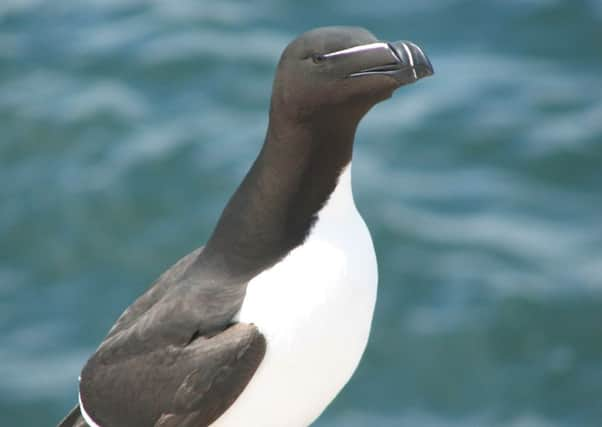Are razorbills Britain’s most under-appreciated sea birds? - Roger Ratcliffe


Such turbulent conditions make it hard to spot any birds out on the water’s surface, so it was surely a stroke of luck which led me to see a small raft of razorbills offshore.
The razorbill is perhaps the UK’s most under-appreciated seabird, and on the Yorkshire coast it tends to get overlooked through keeping company with the charismatic gannet and cute, comical puffin. But this black and white member of the auk family, with large white-lined bill from which its name is derived, is a real cracker when seen at close quarters and deserves more attention.
Advertisement
Hide AdAdvertisement
Hide AdAt 14 inches in height it is a smaller version of the flightless great auk, which stood up to 33 inches tall and has the sad distinction of being the last British bird to become extinct. Our final nesting pair was killed by hunters on St Kilda off Scotland’s north-west coast in 1840, and the last great auks known to science were killed in Iceland four years later.
I cannot find any record of the great auk being seen on the Yorkshire coast but one of its huge eggs, around five inches in length, is in Scarborough’s Rotunda Museum.
Thankfully, there is no danger of the bird’s smaller cousin being driven to extinction, even though within living memory razorbill eggs - along with those of guillemots and kittiwakes - were harvested from ledges on the 400ft-high chalk cliffs at Bempton and Flamborough by so-called “climmers”. These were individuals who descended on hemp ropes with whicker baskets on their backs and later sold them for eating in posh London hotels. Either that or they sent them to Leeds tanneries where the egg whites were used in the patent leather industry.
Harvesting ended in 1953 and the razorbill population now seems healthy. When a count was undertaken on the cliffs in 2000, 8,539 individuals were recorded but a follow-up survey in 2008 put the number at 14,927, a remarkable 75 per cent increase.
Advertisement
Hide AdAdvertisement
Hide AdIt is normal for figures to go up and down, as they have done so since then, because the birds are sensitive to fluctuations in their diet of sandeels and sprats, which are themselves susceptible to climate conditions.
After severe storms five years ago, more than 50,000 seabirds, many of them razorbills, were washed ashore and most of the birds examined were found to be emaciated and have empty stomachs.
According to the RSPB, the single egg which razorbills lay is highly vulnerable to predation by carrion crows. Also, in recent years, many birds at Bempton have being displaced by the growing colony of gannets.
Of the half dozen dead razorbills I have encountered on the Yorkshire coast most were victims of oil slicks, but one bird found near Withernsea was free of oil and had no obvious sign of injury.
Although a sad find, it allowed me to admire the beauty of its glossy black plumage and razor-like beak.